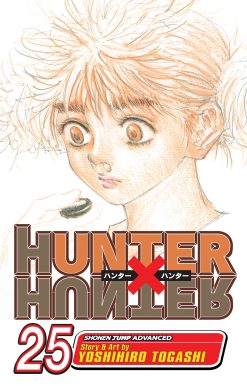These Dark Things
14.00 JOD
Please allow 2 – 5 weeks for delivery of this item
Description
When a beautiful college student is found murdered in the catacombs beneath a monastery, Captain Natalia Monte of the Carabinieri is assigned to investigate. Could the killer be a professor the student had been sleeping with? A blind monk who loved her? Or perhaps a member of the brutal Napali criminal organization, the Camorra? As Natalia pursues her investigation, the crime families of Naples go to war over garbage-hauling contracts; and all across the city heaps of trash pile up, uncollected. When one of Natalia’s childhood friends is caught up in the violence, her loyalties are tested, and each move she makes threatens her own life and the lives of those she loves.
Additional information
| Weight | 0.3 kg |
|---|---|
| Dimensions | 1.7 × 12.8 × 19.1 cm |
| PubliCanadation City/Country | USA |
| by | |
| Format | Paperback |
| Language | |
| Pages | 240 |
| Publisher | |
| Year Published | 2012-5-8 |
| Imprint | |
| ISBN 10 | 1616950765 |
| About The Author | Jan Merete Weiss grew up in Puerto Rico. She studied poetry and painting at the Massachusetts College of Art and received a Master's degree from NYU. Her poems have appeared in various literary magazines. She lives in New York and lectures at Lehman College. |
“Where better to set a noir police procedural than in streets awash in uncollected trash, against a backdrop of smoke rising from Vesuvius? . . . Donna Leon owns Venice, and David Hewson rules Rome. With this formidable debut novel, Weiss lays claim to Naples.”—The Boston Globe“The most appealing element in this distinctive first is the fascinating contradictions between modern Naples, Italy, and its medieval past that Merete Weiss knits into an original mystery . . . Even Captain Natalia Monte of the Carabinieri and her Buddhist partner are intriguing opposites in their temperaments and their approaches to an investigation.” —The Charlotte Observer“Weiss has done her homework, walked the pestilent streets, prowled the catacombs below the city, and created a thoroughly human woman who will do what she must to protect her part of a city that both enchants and infuriates her.”—Margaret Maron, author of The Deborah Knott Series“Naples may be a city of charm and history, but it festers with crime, whether individual or organized. And it forms the backdrop for Jan Merete Weiss' absorbing debut novel . . . Weiss invests her debut with a plot replete with shocks, her characters—even the minor ones—are drawn with care and come alive as complete beings on the page, and her vivid portrayal of Naples, in its glory and its gloom, is unforgettable . . . These Dark Things tells a dark story and marks the beginning of what promises to be a bright series.”—Richmond Times-Dispatch“Full of intriguing contradictions and cultural clashes between modern Naples and its past, and Merete Weiss confidently weaves them into this distinctive mystery.”—Milwaukee Journal-Sentinel“The most intriguing aspect of this appealing debut is the female perspective it offers on the Neapolitan criminal underworld, both from Natalia’s side as a Carabinieri officer and from the points of view of the women who work for the Camorra. Full of vibrant descriptions of Naples and boasting a solid mystery plot, These Dark Things heralds the arrival of a most promising series. Recommend it, in particular, to fans of Michael Genelin’s Jana Matinova series.”—Booklist“Just when we thought all the possible plots had been taken, Weiss brings us a new police procedural set in Naples, Italy, that taxes the brain and gives us pause for the future of society . . . Natalia’s a favorite type of heroine because she’s no saint herself, so dig in and prepare to be riveted by this intense and violent read. VERDICT: Natalia represents a new era in Italian culture in which women can operate effectively as authority figures. For all readers who love a complex story fraught with tough decisions about friendship, family loyalties, and justice.”—Library Journal“Absorbing. . . . The corruption of the Neapolitan bureaucracy, mirrored by the stench from uncollected garbage in the streets, taints but cannot overcome the vitality of the city. Weiss renders its bustling trattorias and colorful neighborhoods with flair.”—Publishers Weekly |
|
| Excerpt From Book | 1A large cypress tree arched over the graves, and a fewclouds the color of peaches. The horizon glowed. The Neapolitansun hadn’t yet begun her climb. Gina Falcone surveyedthe newest additions beneath the burlap on her cart.Besides the midsized tibia, a rib cage, and a large femur,there was a child’s skull. Male or female, the bone cleanerdidn’t know. Nor did she care. The recent dead troubledher no more than the bones of the plague victims fromcenturies ago.At Via della Piazzola, she entered the old section of thecity. Most of the red paint was chipped off her cart. Thebare metal wheels ground against the black flagstones.Walking past tiny dark alleys, the vichi, she imagined theomnibuses draped in black that had waited, centuries ago,for the priests and stretcher-bearers to carry out the cadaversduring the plague epidemic.It was a block more to the Church of Santa Maria delleAnime del Purgatorio. Outside the flower shop, a middleagedtourist, her hair rumpled from sleep, was bent overthe buckets, inhaling the jasmine. Gina passed like ashadow come loose from a building. She adjusted the bagon the cart as it banged along the cobblestones. Marketstalls clustered under medieval arches. The fishmongerdumped mussels onto a bed of ice. Across the way, thecheese man hollered up to his wife, who scowled and lowereda basket from their window. He removed keys andsubstituted butter and a loaf of bread.“’Giorno, Signora,” called a robust man arranging burntorangeapricots in his shop.“’Giorno, Nico,” she replied.Near the back of the shop, Nico’s mother sat crocheting.Everyone knew not to touch the fruit. You pointed to whatyou wanted and he made the selections, weighed andbagged the apples or grapes, and you paid. Gina Falconedisregarded the convention. Nico didn’t like it but neverobjected, even when she ate a piece of fruit without paying.Or grabbed a pear to test its ripeness and sent a half dozenothers rolling across the ground.That she did holy work and could intercede for souls waylaidin purgatory—like Nico’s grandmother—kept him fromsaying anything to her. Gina Falcone was among the last ofthe bone cleaners. Officially, second burials had ceaseddecades ago. It was an ancient practice going back to theEgyptians. The mourners waited a year for the flesh todecompose, then disinterred the bones. Some placed themin an ossuary, a bone box, for the second burial. Or the fewremaining bone cleaners, like Gina, collected them from thegrave keepers and carried them to their rest in certain Napleschurches where the practice was still quietly tolerated.“Ciao, Gina,” Nico said, charging her a token for the fruitshe’d taken.She crossed the street to the church, a dark structureamid the crumbling ochre buildings that surrounded it. Asunflower, a rose, and a stem of mimosa rested in the irongates. Four bronze skulls and femurs sat atop four shortcolumns. The skulls gleamed, polished daily by the passersbywho touched them. Santa Maria delle Anime del Purgatorio.Vagrants dozed in the shadows of the black stones,the Church being too stingy to invite them in but not heartlessenough to forbid them a concrete bed outside itsdoors. The odor of urine was strong.Purgatorio was four centuries old, built around the timethe Cult of the Dead took hold in Naples, when Jesuitscelebrated sixty masses a day on its altars. They preachedamong skulls and skeletons laid out on black cloth. Thepriests hadn’t held ecstatic services here in many years.Gina missed them and the large crowds of parishionerscarrying torches and flashlights in procession, descendingto the crypts where each would select a skull to pray over.The faithful still climbed down into the crypts to washbones and privately pray for those in limbo, souls that hadleft this world but not yet reached the next.At the end of the Second World War, Gina Falcone haddug up the remains of her young husband and anotherfallen soldier and prepared them for their second burial.She felt called to continue, and her work began. For a longtime, business was brisk, but it had slowed during the pastdecade. Signora Falcone survived on a small stipend fromthe Neapolitan Burial Society and donations from thebereaved.Church bells tolled eight times. The madwoman on Vicodel Sole screamed “Attenzione,” as she had every morningfor years. “Sono malata!” I am ill. “Il pericolo. Il pericolo.” Thedanger. The danger.A dozen people waited to enter the sanctuary—twowomen for every man. Some fingered their rosaries, prayedunder their breath. Tonio the Dwarf stood at the front. Agang of pigeons pecked at scattered breadcrumbs aroundtheir feet.“Away!” Gina cried, waving her arms. They warbled inprotest, ruffling their wings, lifting a foot before alightingagain. She knew who was responsible: Uccello Camillo.“Bird” Camillo’s pockets bulged with crumbs.The bone cleaner mumbled and grabbed her cart. Thefaithful moved aside to let her through to deliver the newbones before they entered and descended. Tonio steppedout of the line to help lift the cart up the steps to thenarrow church entrance. Gina handed him a key. Toniowas barely taller than the keyhole.“Needs oil,” he said, working it into the lock. He pushedopen the wooden door in to the dark interior. The onlybright spot was the white altar. At its foot, purple and whitechrysanthemums wilted in a vase.Gina rolled the cart inside and leaned it against the lastpew, a simple wooden bench without a cushion. She madethe sign of the cross and took the bag from the cart. GinaFalcone could find her way anywhere in the church withher eyes closed. She dragged the bones past the altar andthrough a small door that led to the crypt. Bones in onehand, with the other she felt her way down the longnarrow staircase. Her eyes adjusted. At the very bottomwas a faint light. Candles, left perhaps by someone theprevious day.The crypt comprised several rooms. In the first, skullswere piled and stacked everywhere: on the ground, inniches cut into the walls. A shrine with a lone skull strewnwith dead flowers rested atop a mound of leg bones. GinaFalcone shifted a decayed sunflower to a flat tin tray layeredwith finger bones and more skulls. She passed througha hallway of tombstones into the larger burial room. Thisgallery was filled floor to ceiling with yet more skulls andbones piled neatly in niches. Some eye sockets held slips ofpaper: messages from worshippers, personal informationabout the deceased gleaned in dreams about them.In the room’s center was a bench carved from volcanicstone. There was an armrest and a hole in its seat. In timespast, the body was placed there, for the flesh to rot away,the putrefied fluids to pour into the drain below. PuozzàSculà! May you drain away—a taunt still heard in the streets.It was quiet. Dank and peaceful. Gina stopped shortbefore a stack of skeletons. Half reclining on the bench,resting her chin on her hands, was an angel, her face pearlyand framed in wavy red hair. Lovely, all in pink. At her palethroat, a beautiful necklace glinted with rubies and pearls.Gina stepped closer to gaze at the red blossom near herheart. There were no petals, only the hilt of a large knife.***The call came in to the Carabinieri regional station on ViaCasanova, as Captain Natalia Monte finished her twentyfour-hour sleepover duty. She swung her feet to the floorand tried to clear her vision.“Why not the police?” she demanded of her dispatcher.“The body was found at a cultural shrine.”“Damn,” she muttered. Protection of cultural institutionswas one of the Carabinieri’s odd areas of responsibility,answering as they did partly to the Ministries of theInterior, Exterior, and Defense.Cursing, Captain Monte pulled on her uniform jacket andclosed the knot of her tie, splashed water on her face, wet herfingers again, and tamped down her curls. They had sprungback up by the time she descended the three flights to thestreet and her duty car and driver. Getting in beside him,she closed her eyes and tried to doze as they headed for thecrime scene.Father Cirillo, the monsignor, was waiting for her at theentrance to the church, his ample stomach strainingagainst the mended cassock he’d donned for this task.“Thank God you’re here,” he said, coming up to Nataliaas she buckled on her holster. “I was at breakfast when Iheard the commotion.”Together they entered the church. Near the altar, hepointed to a door, hardly noticeable. Natalia ducked toavoid hitting her head passing through. “Careful,” he said,turning to her as they felt their way down the dark stairstoward the lantern light below.“Wait,” she ordered. Someone was coming up the stairstoward them. Natalia drew her pistol as a small man camearound a turn in the stairwell.“Don’t shoot!” he screamed.“Luca, you idiot. I ought to put you out of your misery.If you’ve disturbed anything—”“Nothing, Captain. Not ever.”Natalia holstered her weapon. Luca was an old freelancephotographer with a lens for a brain. A nocturnal creature,he lived for a good murder. Half the time, he arrived at thescene before the police or the Carabinieri. Luca pressedpast them in the stairwell.“Monsignor,” he touched his cap. “Captain Monte.”Natalia glared at him.“Oh,” he said, stopping. “Where was she killed?”Natalia pointed upward, saying nothing. Luca scurriedtoward the surface.They passed through a large cavernous room, through along hallway, and into a third room, each decorated withcenturies of bones piled onto one another, some organizedinto categories, some arranged in eerie patterns.“She’s in here,” the monsignor said. Natalia paused tobrush dust from her uniform. Despite the Armani design,it was wrinkled from the long night and now covered withgrit. The red bands running down her pant legs weregrimy, like her, like the cuffs and collar of her white shirt.A beautiful girl sat on a stone bench in the center of theroom. Ethereal. Pre-Raphaelite. She did look like anangel—a bloody one.“As you may have gathered,” Father Cirillo said, “thischamber was used several hundred years ago for burialsduring the plague outbreaks. She’s posed like someonemight have been in the seventeenth century. I’ve neverseen anything like this except in illustrations.”He was babbling. Natalia wished he wouldn’t. Shestepped closer, examining the ground.Communing with the dead. Many in Naples still did it.When Natalia was a girl, her mother’s mother—Natalia’snonna—had gone weekly to the crypt where her sister’sbones were displayed. Sometimes she took her granddaughter.Nonna made herself comfortable on a chair providedthere. If there were no other visitors, the clicking ofher knitting needles was often the only sound.Such a gloomy city, Natalia thought, but what could youexpect in a metropolis where people actually dressed inblack so as not to be mistaken by the dead as living soulsripe for haunting? A miracle that anyone got out of bed inthe morning at all.The monsignor was still lecturing. Cirillo was an amateurscholar and led occasional tours of his church and the surroundingneighborhood. Natalia had seen him holdingforth outside the church just the past spring.“You’re too young to remember World War II. Bombsdropped on Naples every day. Twenty thousand peopletook refuge down here and in passages and cisterns carvedby the Romans in the volcanic rock beneath the city.”“Yes, Monsignor.”There was not much evidence of blood anywhere in theroom. Murdered elsewhere. Maybe choked at the sametime, given the marks under her jawline. And seriouslystabbed. Twice. The back of the dress was as red with dryblood as the front was pinkish white.Skulls ringed the victim in a half circle. Lilies rotted nearher feet, their scent cloying. A candle burned. The victimwas fair with a smattering of freckles, traces of lipstick visibleon her mouth. A girl adorned for life’s pleasures.Natalia walked the perimeter of the room, peeringbehind stacks of leg bones, wrist bones, finger bones, andskulls. No weapon; only bones and crumbled rock. Somethingglinted from the rubble. Natalia stepped closer. Sheslipped her gloves on and picked it up. A small silver heart,untouched by the dust—an ex-voto, a votive offering.Sixteenth-century worshippers had left them as offeringsto the saints in gratitude for healing a broken limb, a diseasedlung. Clerics as well as laypeople believed in them.Nowadays, most considered them quaint. Most, but not all.Ex-votos were usually miniature replicas of hands andfeet or lungs. A heart was unusual. It suggested someoneunsophisticated. Or was that a ruse? Did this poor girl’sdeath cure someone of heartbreak? A spurned lover? Or amad person? Maybe both and the same.“‘The Cult of the Dead,’ the worshippers of the boneswere called,” Father Cirillo began.When Natalia had been a girl, on All Souls’ Night herfather would put a bucket of water outside their front door.“So the dead can drink as they enter the house,” he’d say.The next morning, when she would point out that the levelof the water was unchanged, her mother had spat to makesure her daughter hadn’t aroused the evil eye.“They get thirsty,” her mother scolded. “Mix this.” Shepushed a bowl of dough to her daughter.It was to make fave dei morti—the broad beans of thedead, the dough molded into the shape of bones. Not aNeapolitan tradition. Natalia’s mother had learned tomake the cakes from her cousin Rosalia, married to a carpenterfrom Tuscany. Long after Cousin Rosalia passed andevery November until her own death, her mothercontinued baking them. To honor Rosalia’s memory, shesaid. And hedge her bets, Natalia thought.Before they kneaded the dough or enjoyed the tastycakes, Natalia’s mother repeated the prayer from the Cultof the Dead: “Sante Anime del Purgatorio pregate per noi chepregiamo per voi.”Holy Saints of Purgatory, we beseech you to pray for usas we pray for you. |
| Series |
Only logged in customers who have purchased this product may leave a review.






Reviews
There are no reviews yet.